| The event for which our village, Campile, is most famous for is the bombing.
This happened on Monday August 26th, 1940 between
1.50pm and 2.10pm.Three local girls were killed. Ireland
was neutral and had no part in the war. The three who
died were Mary Ellen Kent (30), her sister
Katherine Kent(26) and Kathleen Hurley(27). The Kent
girls were from Terrerath and Kathleen Hurley was from
Garryduff. Mary Ellen was the manageress in the
restaurant and Katherine (Kitty) worked in the drapery
department. Kathleen also worked in the restaurant.The
Co-op was badly destroyed. The dining room or restaurant
got the worst of the blast. Part of the train track was
tore up. Luckily only three people were killed as 40 others
had just left the restaurant or gone home for lunch.The
first bomb was the fatal explosion which killed the
three girls. It hit the restaurant and creamery part of
the Co-op. The second bomb went through the roof and
started a fire. A third bomb hit the window of the co-op
and damaged the railway line. The fourth bomb landed in
a field and left a massive crater or hole in the ground.
Four bombs were dropped that day in Campile. |
|
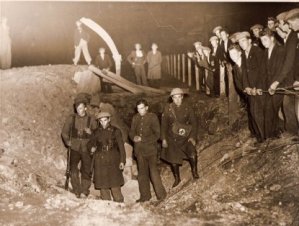
The crater made by the bomb near
the railway line
|
| The stationmaster's house
was badly damaged and his hens were killed. It is said
that slates went through the air like pieces of paper as
did gates, doors and glass.The bombs made a terrible
roar people said. Lots of people like Kitty Shannon had
lucky escapes. |
| We also read about a lorry
full of soldiers coming to help from New Ross. They
overturned at the bad bend in Ballinamóna which is very close to our
school and three of them were badly injured. |
|

This is a bomb fragment Tom
Grennan from Ballykerogue gave us to look at in school.
There was a great demand for bomb fragments after the
bombing by souvenir hunters. 'Skillet pots' came in
useful to satisfy the crowds whe descended on
Campile.
|
| There are many reasons
told why Campile was bombed. Some say that English
soldiers were found with butter wrappers from the
creamery by the Germans. Others say the Germans were
lost and dropped their pay load as fuel may have been
running low and they were returning home.The third reason is that
they thought they were in Pembroke in Wales as
navigation standards weren't great and it is possible
English intelligence cold bend their radar and put the
German plane off course. The latter two reasons are the
most likely for the bombing, causing the first fatalities
in Ireland during World War 2. |
|

Josephine and Francis
Mc.Crohan,daughters of the stationmaster Paul,had a
lucky escape.The roof of the stationhouse was badly
damaged and their fowl were killed. |
|
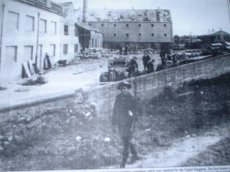
Another picture of the damage
caused by the bombs
|

|
|
A piece of the rail from the
railway siding whiche travelled about a quarter of a
mile away to the Rowe's of Tinnock.
|
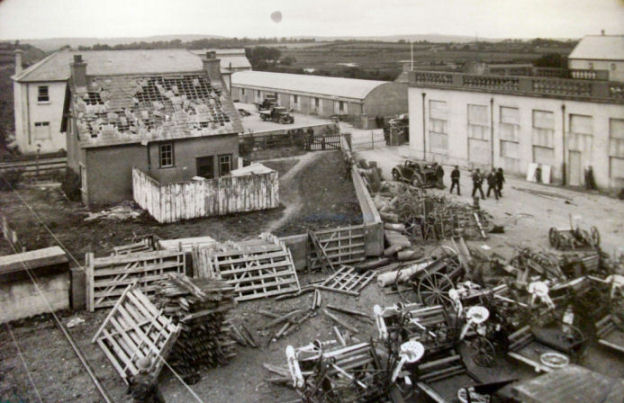
|
|
Photo showing
the wrecked machinery after the bombing.
|
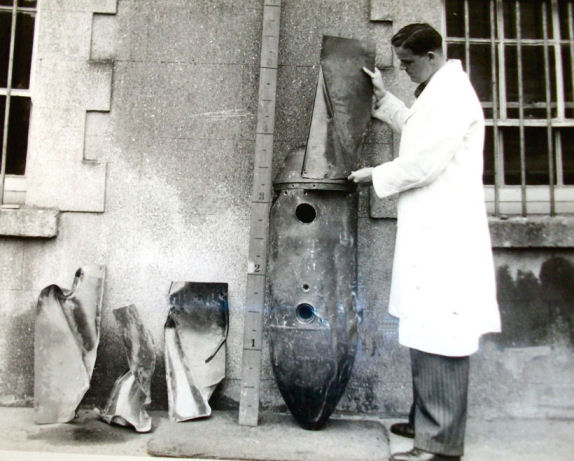
|
|
The unexploded German bomb in
Campile that was carted off to the Garda Station in a
wheelbarrow.
|
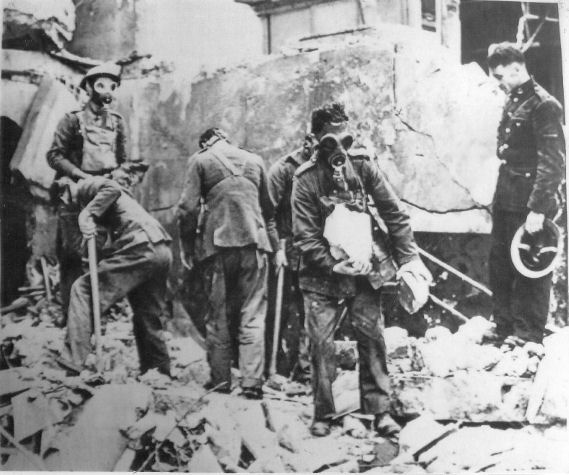
|
|
Soldiers wearing
gas masks due to escaping ammonia gas.
|
|
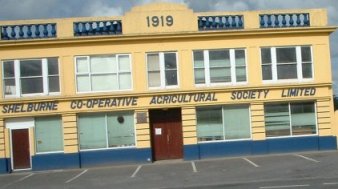
Co-Op in all its glory 2003
|
|
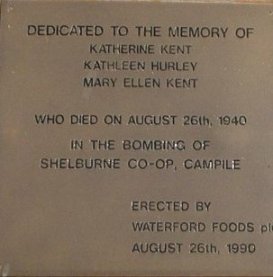
Memorial Plaque on Co-Op
wall
|
|
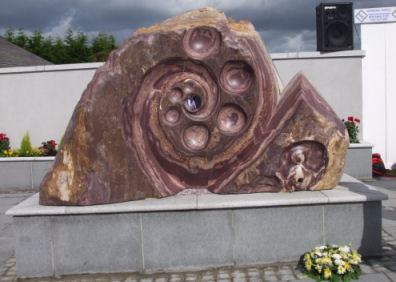
|
|
A fine Memorial Garden to
remember the three girls and the Campile bombing, was
unveiled in the village by Mr. Seán Connick TD on
August 28th 2010. This was the 70th anniversary of the
German bombing.
|
|
The
three girls who died
|
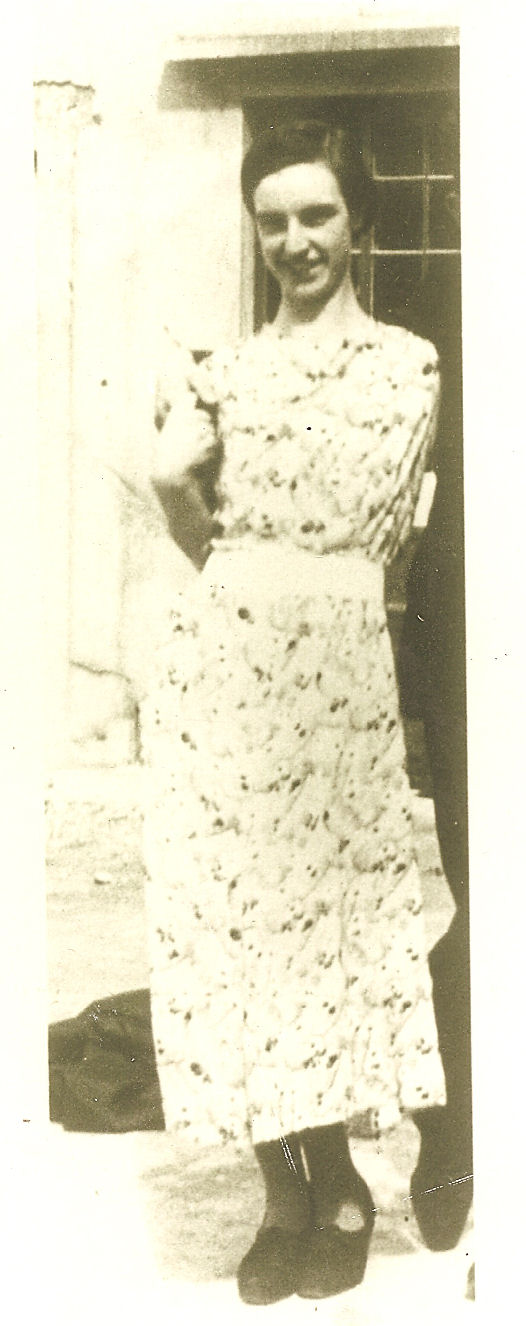
|
|
Kitty
Kent
|
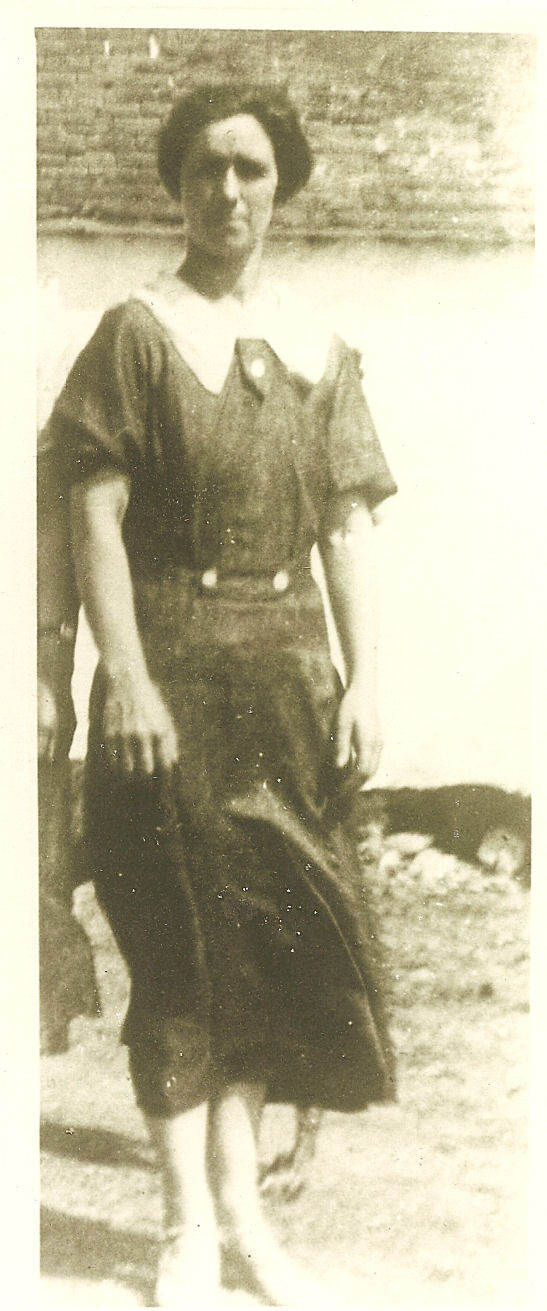
|
|
Mary
Ellen Kent
|
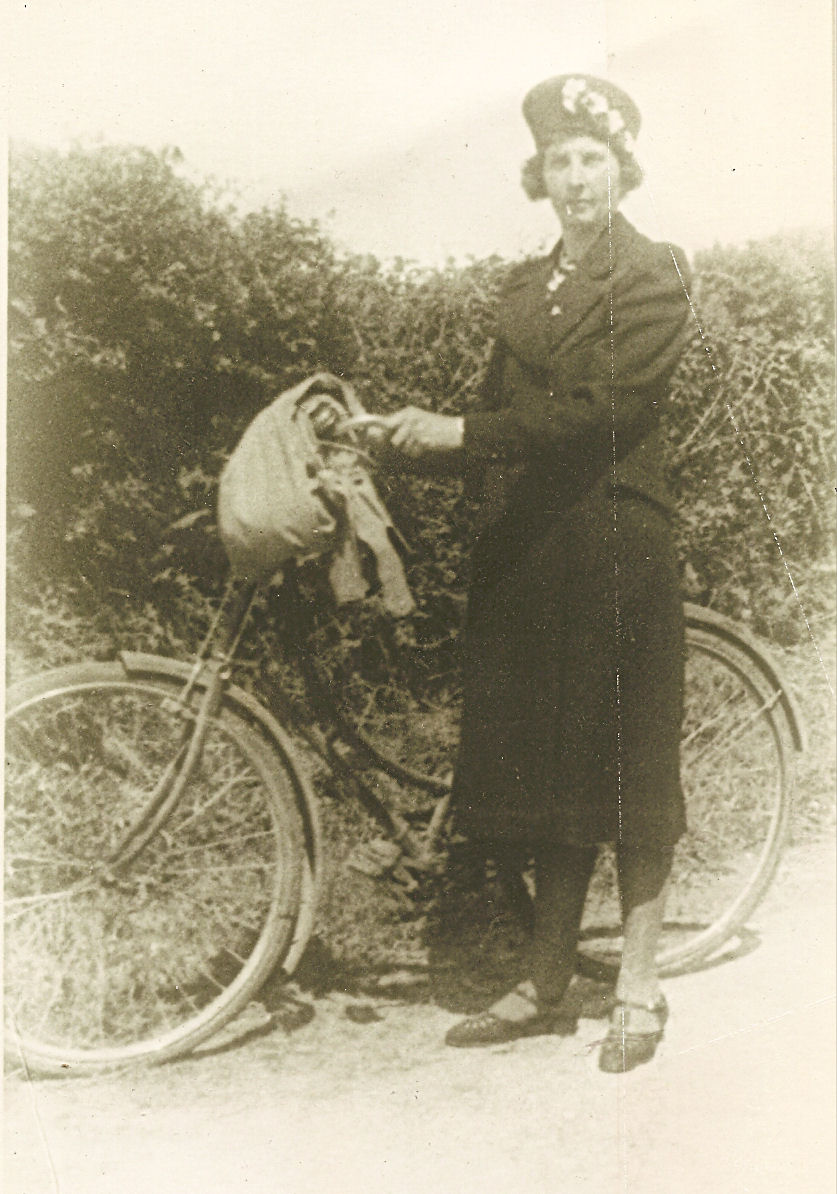
|
|
Kathleen
Hurley
|
|
What
Campile is like to-day
|
| The Co-op had to be re-built but the creamery wasn't.
The railway was also
repaired and the other damaged buildings. We have big
shops like Centra and the Co-op is now with Glanbia. There are
three pubs. The Co-op has a memorial sign up for the
three girls who were killed. There are four housing
estates in Campile. There's a chip shop, a soccer pitch,
a parochial hall, and two hair salons. There's also a
Garda station,post office, a chemist and a drapery.
In 2010 the Co-op building was
demolished and this was the end of an era but its memory
will live on.
|
|
Please
Return to Local History
|

